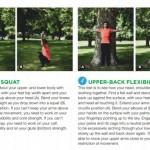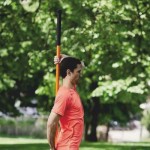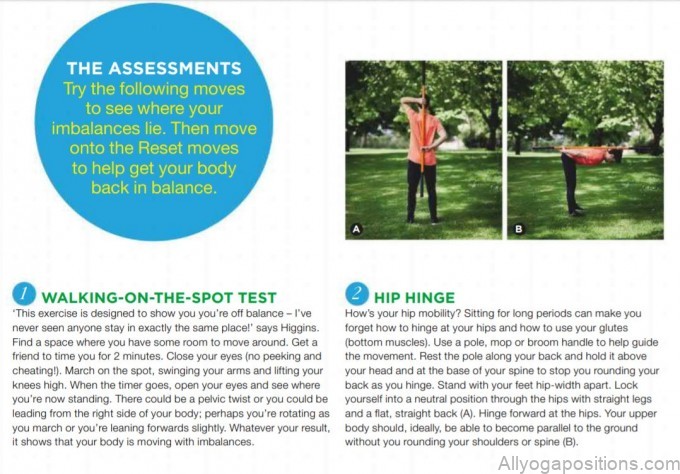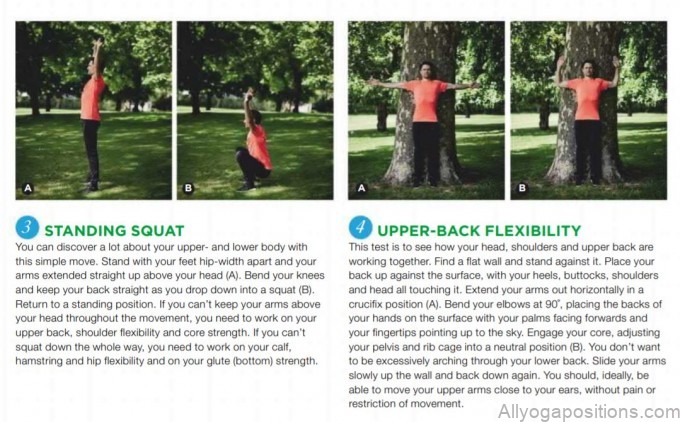WORKOUT REGAIN YOUR BODY BALANCE
Want to avoid injury this year? Sort out your imbalances before you go hell for leather in the gym, says PT to the stars David Higgins…
Ready to hit the gym this new year? Not so fast. ‘Modern life has made it easy to slip into the habit of using your body as nothing more than a vessel – the machine you’re carried around in,’ says David Higgins, personal trainer and physical therapist to the stars. ‘That means you stop taking care of yourself physically. But we need our bodies in a good condition if we’re going to thrive.’ Having worked with Margot Robbie since her role in Tarzan, Rebecca Ferguson for films such as Mission Impossible and counting Claudia Schiffer as a long-term regular client, Higgins firmly believes in resetting your body before you work it hard, whatever titness level you re at. ‘We all have imbalances,’ he says. ‘And it can actually be counterproductive to exercise if your body’s not properly in alignment.’ That makes perfect sense. But how do we find out where our imbalances are?
YOGA: REGAIN YOUR BODY BALANCE Photo Gallery
BACK TO BASICS
Higgins, who also co-founded health and fitness company BodySPace (body-space.co.uk), has written a book, The Hollywood Body Plan (Headline, £25) to help us mere mortals get a taste 01 the prehab regime he uses with the A-listers. I’ll help identify what’s holding you back and show you the changes you need to make to your lifestyle and diet to transform your body,’ he says, ‘it’s about increasing tne base level of vour fitness so you can live a longer, better life, and about freeing you from pain.’
Like tne sound of that? Try some or nis signature moves to help identify your imbalances and get your body working properly so you can get better results, faster, and stave off injury this year.
WALKING-ON-THE-SPOT TEST
‘This exercise is designed to show you you’re off balance – I’ve never seen anyone stay in exactly the same place!’ says Higgins. Find a space where you have some room to move around. Get a friend to time you for 2 minutes. Close your eyes (no peeking and cheating!). March on the spot, swinging your arms and lifting your knees high. When the timer goes, open your eyes and see where you’re now standing. There could be a pelvic twist or you could be leading from the right side of your body; perhaps you’re rotating as you march or you’re leaning forwards slightly. Whatever your result, it shows that your body is moving with imbalances.
HIP HINGE
How’s your hip mobility? Sitting for long periods can make you forget how to hinge at your hips and how to use your glutes (bottom muscles). Use a pole, mop or broom handle to help guide the movement. Rest the pole along your back and hold it above your head and at the base of your spine to stop you rounding your back as you hinge. Stand with your feet hip-width apart. Lock yourself into a neutral position through the hips with straight legs and a flat, straight back (A). Hinge forward at the hips. Your upper body should, ideally, be able to become parallel to the ground without you rounding your shoulders or spine (B).
STANDING SQUAT
You can discover a lot about your upper- and lower body with this simple move. Stand with your feet hip-width apart and your arms extended straight up above your head (A). Bend your knees and keep your back straight as you drop down into a squat (B). Return to a standing position. If you can’t keep your arms above your head throughout the movement, you need to work on your upper back, shoulder flexibility and core strength. If you can’t squat down the whole way, you need to work on your calf, hamstring and hip flexibility and on your glute (bottom) strength.
Upper-back flexibility
This test is to see how your head, shoulders and upper back are working together. Find a flat wall and stand against it. Place your back up against the surface, with your heels, buttocks, shoulders and head all touching it. Extend your arms out horizontally in a crucifix position (A). Bend your elbows at 90°, placing the backs of your hands on the surface with your palms facing forwards and your fingertips pointing up to the sky. Engage your core, adjusting your pelvis and rib cage into a neutral position (B). You don’t want to be excessively arching through your lower back. Slide your arms slowly up the wall and back down again. You should, ideally, be able to move your upper arms close to your ears, without pain or restriction of movement.
Table of Contents
Maybe You Like Them Too
- Mastering Virabhadrasana A: The Warrior Pose of Empowerment
- Embracing the Essence of Wide Legged Forward Bend: A Deep Dive
- Unlocking the Power of Prasarita Padottanasana: The Wide-Legged Forward Bend
- The Power and Elegance of the Wide Legged Forward Bend II Yoga Pose
- Mastering the Warrior II Pose: A Deep Dive into Its Benefits and Techniques






